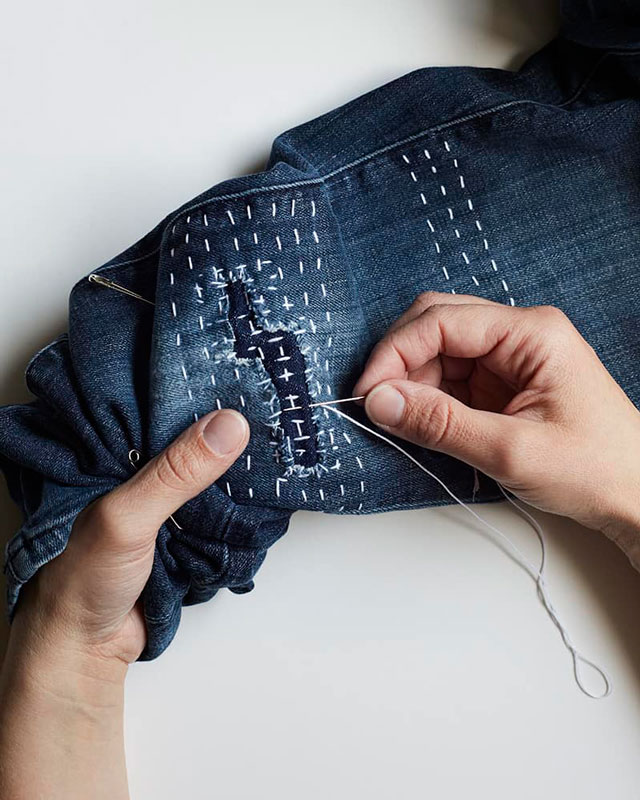
When you go online and choose a dress of your choice or spend hours searching racks for just the thing that you are looking to buy, you may not even think that your purchase could be adding to the environmental issues plaguing the planet. These products are now being delivered right at your doorstep — be it shirts, trousers, t-shirts, salwar kameez sets, gowns, dresses, sarees, kids’ wear — you can choose any garment and it reaches you without a fuss. Moreover, it is also possible to return it if you don’t like it, making fast fashion a vital part of the e-commerce business.
But such buys do more than just contribute to retail therapy. They push forward environmental degradation and contribute to the massive climate change that is taking place. Let’s just take water, which is a scarce resource that needs urgent conservation. The fashion industry is the world’s largest user of water. It consumes anywhere between 20 to 200 trillion litres every year.
And while cotton and silk textiles contribute to chemical and pesticide pollution in their production, polymers are the most problematic. They shed microplastics. Plastic fibres are released when we wash polyester and other polymer-based textiles. It is learnt that textiles contribute as much as 20 per cent to 35 per cent microplastics that are polluting our oceans.
The UK’s House of Commons Environment Audit Committee, in its report, Fixing Fashion: Clothing Consumption and Sustainability, has said: “Textile production contributes more to climate change than international aviation and shipping combined, consumes lake-sized volumes of fresh water and creates chemical and plastic pollution. Synthetic fibres are being found in the deep sea, Arctic Sea ice, fish and shellfish.” It predicted that by 2050, the global fashion industry could use more than a quarter of the global carbon budget associated with a two-degree
temperature rise.
And who is responsible for this? Each one of us, of course. So, what should one do to save the world from such a calamitous future? The World Economic Forum (WEF) has suggested ways that each one of us could follow to break the fast fashion habit. Here are some you could start with right away:
First and foremost, WEF says that we should “buy less and wear more,” which means we should not throw out clothes for the heck of it. Or just because a button is missing, or the stiches on the hem have come apart. Instead, we should stitch the button or repair the dress. In our country, where it is not difficult to find a tailor and a large population has the skill of mending, throwing out a garment on a mere whim is blasphemy. WEF quotes a report that says “extending the active life of 50 per cent of UK clothing by nine months could save 8 per cent carbon, 10 per cent water, 4 per cent waste per metric ton of clothing.” Now, if we extend that logic to the population of India with buying power, we could make a massive difference.
In our country, where it is not difficult to find a tailor and a large population has the skill of mending, throwing out a garment on a mere whim is blasphemy.
The next suggestion is that you must be aware of what you are buying, or you must “read the label.” Petroleum-based synthetic fibres like polyester require less water and land than cotton, but they emit more greenhouse gases per kg. But bio-based synthetic polymers made from renewable crops like corn and sugarcane release up to 60 per cent less carbon emissions. Recycled polyester is also better.
Of course it is best to buy organic cotton. Though more expensive, it lasts longer. Moreover, if more people opt for organic weaves, then demand for them will grow, which over time will reduce the use of pesticide on the crop, water and chemical for production.
Incidentally, if you are an active buyer of branded clothes and believe in the green cause, it would be pertinent to look for companies that are collecting old garments, recycling, and have pledged to reduce emissions and follow responsible production methods.
“Watch your wash” is an important tip, especially for those who throw clothes into the washing machine without considering its environment impact. According to estimates a 6 kg load of clothes has the potential to release 700,000 fibres into the environment. So, wash a garment only when it needs a wash instead of tossing it into the machine out of habit. Also, clothes turned inside out last longer and washing at lower temperatures saves energy.
Watch your wash! A 6kg load of clothes can release 700,000 fibres into the environment. Wash a garment only when it needs a wash instead of tossing it into the machine out of habit.
WEF’s suggestion to “rent or borrow clothes” is a great one. Several specialised companies have now started renting clothes for occasions. Be it a wedding, festivals, a fancy dress event, or corporate meetings. It makes so much sense to borrow the dress instead of getting it made and then allowing it to sit in your cupboard for several years. Borrowing from friends and family should be a natural progression and not something to be embarrassed about. We need to change our thinking to change the world!
According to McKinsey & Company’s last estimation, the global fashion industry is worth $1.7 trillion, with over 300 million people working somewhere along the value chain to create clothes. Believe it or not, but from 2000 to 2014, the production of clothes across the globe doubled and the number of garments purchased per capita increased by about 60 per cent. Fast fashion has been a big contributor to this and if we can stem the tide, we would have done our bit, So, the best slogan that you can spread should well be, “slow down on fast fashion.”
The writer is a senior journalist who writes on environmental issues





